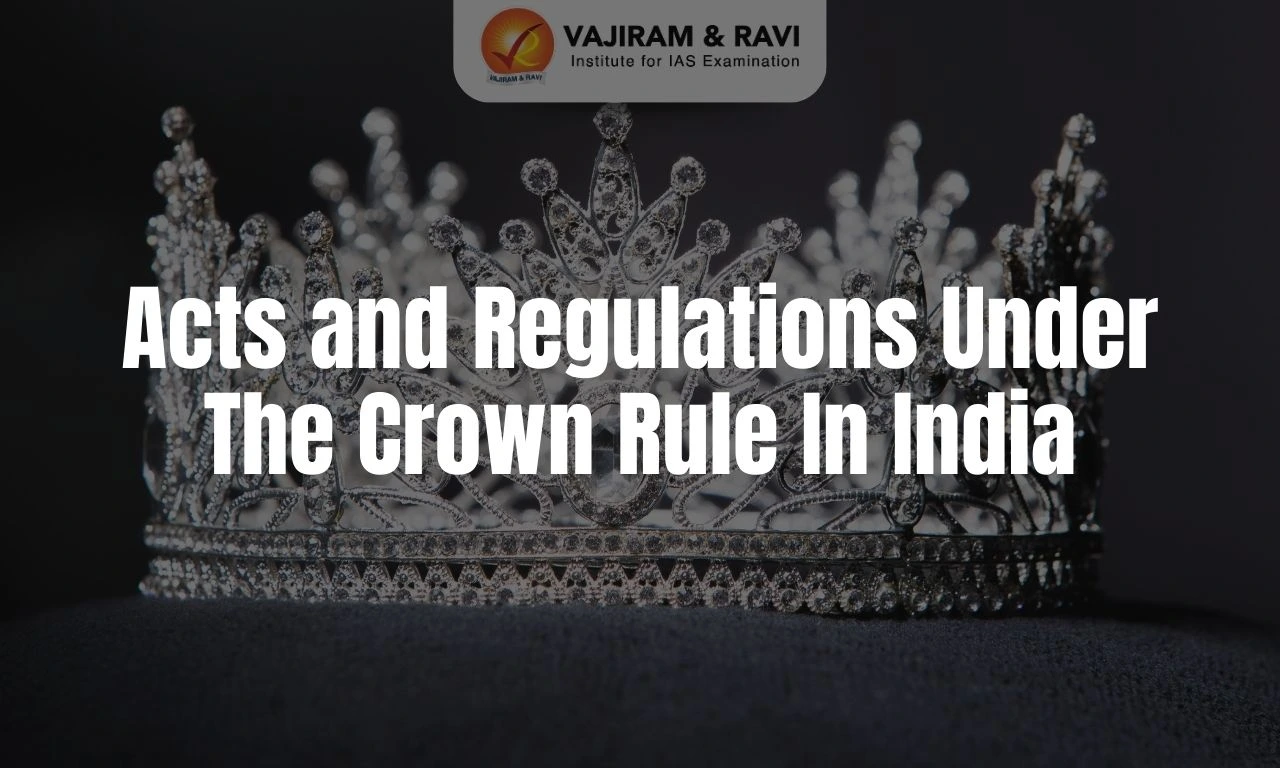Sustainable Development Goals (SDGs) are a comprehensive set of 17 sdg goals adopted by the UN in 2015 to address poverty, inequality, climate change, and more. With 169 targets and 304 indicators, they aim for a sustainable, equitable future. The SDGs build on the Millennium Development Goals, addressing their shortcomings with a broader, universal approach.
India has made progress in areas like poverty and climate action, but challenges persist in funding and regional disparities. The 2024 SDG Report highlights slow global progress, with only 17% of targets on track and rising inequalities exacerbating issues.
Sustainable Development Goals (SDG Goals)
Sustainable Development Goals (SDG Goals) are a set of 17 global goals with 169 targets and 304 indicators adopted by the United Nations General Assembly as part of the 2030 Agenda for Sustainable Development. They are intended to address a variety of global issues, such as poverty, inequality, climate change, environmental degradation, peace, and justice. The SDGs build on the success and shortcomings of the Millennium Development Goals (MDGs) and aim to make the world more inclusive, equitable, and sustainable.
17 Sustainable Development Goals
17 Sustainable Development Goals are aimed at eliminating poverty and hunger, improving health and education, ensuring gender equality, protecting the environment, and fostering long-term economic growth and global partnerships for a better world. These 17 Sustainable Development Goals are:
- SDG 1 - No Poverty: All forms of poverty must be eradicated worldwide.
- SDG 2 - Zero Hunger: eliminate hunger, increase food security, improve nutrition, and promote sustainable agriculture.
- SDG 3 - Good Health and Well-Being: Ensure healthy lifestyles and promote well-being for people of all ages.
- SDG 4 - Quality Education: Ensure that all students receive an inclusive and equitable education, as well as opportunities for lifelong learning.
- SDG 5 - Gender Equality: Ensure gender equality and empower all women and girls.
- SDG 6 - Clean Water and Sanitation: Ensure that water and sanitation are available to everyone and managed sustainably.
- SDG 7 - Affordable and Clean Energy: Ensure that everyone has access to affordable, reliable, sustainable, and modern energy sources.
- SDG 8 - Decent Work and Economic Growth: Encourage long-term, inclusive, and sustainable economic growth, full and productive employment, and decent jobs for all.
- SDG 9 - Industry, Innovation, and Infrastructure: Create resilient infrastructure, encourage inclusive and sustainable industrialisation and foster innovation.
- SDG 10 - Reduced Inequality: Reduce inequality within and between countries.
- SDG 11- Sustainable Cities and Communities: Create cities and human settlements that are inclusive, safe, resilient, and sustainable.
- SDG 12 - Responsible Consumption and Production: Ensure your consumption and production patterns are sustainable.
- SDG 13 - Climate Action: Take immediate steps to combat climate change and its consequences.
- SDG 14 - Life Below Water: Conserve and sustainably use the oceans, seas, and marine resources to promote sustainable development.
- SDG 15 - Life on Land: Protect, restore, and promote the sustainable use of terrestrial ecosystems, manage forests sustainably, combat desertification, and stop biodiversity loss.
- SDG 16 - Peace, Justice, and Strong Institutions: Encourage peaceful and inclusive societies, ensure equal access to justice for all, and establish effective, accountable, and inclusive institutions.
- SDG 17 - Partnerships for the Goals: Strengthen implementation mechanisms and revitalise global partnerships for sustainable development.
Need for Sustainable Development Goals (SDGs)
As the deadline for the Millennium Development Goals (MDGs) approached in 2015, it became clear that significant global challenges still existed. Approximately 1 billion people continued to live in extreme poverty, defined by the World Bank as less than $1.25 per day. More than 800 million people lacked adequate food. This unsettling reality highlighted the MDGs' limitations and the need for a more comprehensive and inclusive approach to global development, resulting in the creation of the Sustainable Development Goals (SDGs).
Millennium Development Goals (MDGs) vs Sustainable Development Goals (SDGs)
The Sustainable Development Goals (SDGs) were introduced to address the shortcomings of the Millennium Development Goals (MDGs) by broadening the focus, emphasising human rights, and involving all countries in a universal agenda for sustainable development.
- MDGs Were Too Narrow: The MDGs concentrated primarily on health, education, and poverty reduction, failing to address larger, interconnected development issues.
- Lack of Focus on Root Causes of Poverty: The MDGs ignored structural factors such as inequality, limited access to resources, and economic disparities that contribute to poverty.
- No Emphasis on Human Rights: Unlike the SDGs, the MDGs made no explicit mention of human rights, which are critical for sustainable development.
- Perception as Targets for Poor Countries: The MDGs were frequently viewed as goals for developing countries to achieve with funding from wealthier countries, with little regard for global responsibility.
- Universal Scope of SDGs: The SDGs are a global agenda that applies to all countries, developed and developing alike, and promotes collective action towards shared goals.
- Inclusion of Governance and Justice (Goal 16): The SDGs include goals for promoting peaceful societies, access to justice, and strong institutions, which were not covered by the MDGs.
- More Inclusive Development Process: The SDGs were created through an inclusive process that included broad consultations at the Rio+20 Summit and "global conversations" with diverse stakeholders, resulting in a more comprehensive and representative agenda.
Sustainable Development Goals Significance
The Sustainable Development Goals (SDGs) cover a wide range of issues, including poverty, inequality, climate change, environmental degradation, peace, and justice. They are significant for several reasons:
- Global Framework for Development: The SDGs offer a comprehensive framework for addressing a wide range of issues, including poverty, inequality, climate change, environmental degradation, peace, and justice. They are intended to be universal, affecting all countries, regardless of their level of development.
- Interconnectedness of Goals: SDG Goals are interconnected, which means that success in one area can have a positive impact on others. For example, achieving gender equality (SDG 5) can aid in poverty reduction (SDG 1) and health improvement (SDG 3).
- Focus on Sustainability: The SDGs highlight sustainable development by meeting current needs without compromising future generations. This includes fostering long-term economic growth, social inclusion, and environmental protection.
- Addressing Global Challenges: The SDGs tackle critical global challenges such as climate change (SDG 13), biodiversity loss (SDG 15), and sustainable cities (SDG 11), which require coordinated international efforts.
- Long-term Vision: The 2030 Agenda for Sustainable Development provides a long-term vision for the future, encouraging countries to think beyond short-term gains and work towards lasting solutions that will benefit future generations.
Sustainable Development Goals Criticisms
While the Sustainable Development Goals (SDGs) are widely praised, they have faced several criticisms. It includes the following:
- Non-Binding Nature: Despite their ambitious name, the SDGs lack binding commitments. Without an enforcement mechanism, accountability for their implementation is weak.
- Underfunding: Currently, almost 40 per cent of all developing countries suffer from severe debt problems. The shortfall is estimated at $4 trillion annually for developing countries.
- Lack of Progress: The 2024 SDG Report reveals alarming stagnation in global progress: Only 17% of the SDG targets are on track. Nearly half of the targets show minimal or moderate progress, and over one-third have stalled or regressed.
- Vagueness: The SDGs have been criticised for their broad and ambiguous goals, such as "living in harmony with nature" and "ending poverty in all its forms." Critics argue that this vagueness renders the goals less actionable and measurable.
- Negative Impacts of COVID-19: The pandemic has undermined countries' ability to achieve the SDGs by 2030. It exacerbated existing inequalities and slowed progress, especially for SDGs 3 (health), 4 (education), 6 (water/sanitation), 10 (inequality), and 17 (partnerships).
- Excessive Number of Goals: With 17 goals and 169 targets, the SDGs can overwhelm resource-strapped countries. A focused set of achievable goals would help address immediate challenges while safeguarding progress in health and education.
Sustainable Development Goals in India
Sustainable Development Goals in India represent a comprehensive national commitment to achieving the United Nations’ 2030 Agenda, focusing on eradicating poverty, ensuring inclusive growth, and fostering environmental sustainability. The implementation of SDGs in India is spearheaded by NITI Aayog, which tracks progress through the SDG India Index, measuring performance across 16 goals and 113 indicators.
- SDG India Index: According to the NITI Aayog’s SDG India Index, India's overall SDG score improved to 71 in 2023-24, up from 66 in 2020-21 and 57 in 2018. All states have shown improvement in overall scores since 2018.
- Areas of Progress: Significant improvements in SDG 1 (No Poverty), SDG 8 (Decent Work and Economic Growth), SDG 13 (Climate Action), and SDG 15 (Life on Land). SDG 13 (Climate Action) saw the highest increase, from 54 in 2020-21 to 67 in 2023-24.
- Government Initiatives: Programs like the Pradhan Mantri Awas Yojana, Swachh Bharat Mission, Ujjwala Yojana, Jal Jeevan Mission, and Ayushman Bharat have helped drive improvements.
- Further, initiatives like the Clean India Mission and the National Action Plan on Climate Change address climate change issues.
- Challenges: Despite progress, economic disparities, regional imbalances, and social inequalities remain challenges, impacting the overall progress toward the SDGs.
- Adequate funding and resource mobilisation for SDG-related projects remain a challenge.
- India faces major environmental challenges, including air and water pollution, deforestation, and climate change.
Sustainable Development Goals Report, 2024
Sustainable Development Goals Report, 2024, was released by the UN Sustainable Development Solutions Network (SDSN). It emphasised that the world is significantly behind schedule in meeting the Sustainable Development Goals (SDGs) established by the United Nations in 2015. Inequalities are widening, the climate crisis is worsening, and biodiversity loss is accelerating.
- SDG Targets Status: The report reveals that only 17% of SDG targets are on track. 18% showed moderate progress, 30% showed marginal progress, 18% stagnated, and 17% showed regression.
- Stagnation Since 2020: Globally, SDG progress has been stagnant since 2020, with SDG 2 (Zero Hunger), SDG 11 (Sustainable Cities and Communities), SDG 14 (Life Below Water), SDG 15 (Life on Land), and SDG 16 (Peace, Justice, and Strong Institutions) falling behind.
- Country Progress Gaps: The rate of SDG progress varies significantly by country group. The Nordic countries continue to lead in SDG achievement, with the BRICS making significant progress while poor and vulnerable countries lag far behind.
- Food Systems Delayed: The SDG targets for food and land systems are particularly off track. The SDR assesses three potential approaches to achieving sustainable food and land systems. Globally, 600 million people will still be hungry by 2030; obesity is on the rise.
- AFOLU Emissions Impact: Greenhouse gas emissions from agriculture, forestry, and other land use (AFOLU) account for nearly one-quarter of total annual global GHG emissions.
SDG Report 2024 Key Findings
For the first time this century, per-capita GDP growth in half of the world's most vulnerable countries has lagged that of advanced economies.
- In 2022, nearly 60% of countries experienced moderate to abnormally high food prices.
- Only 58% of students worldwide achieve minimum reading proficiency by the end of primary school, raising serious concerns about educational progress.
- Global unemployment reached a historic low of 5% in 2023, but persistent roadblocks to achieving decent work.
- Mobile broadband (3G or higher) is available to 95% of the global population, up from 78% in 2015.
- External debt levels in developing countries have remained historically high. Approximately 60% of low-income countries are at high risk of debt.
Sustainable Development Goals (SDGs) UPSC PYQs
Question 1: “Access to affordable, reliable, sustainable and modern energy is a sine qua non to achieve Sustainable Development Goals (SDGs).” Comment on the progress made in India in this regard. (UPSC Mains 2018)
Question 2: With reference to ‘Agenda 21’, sometimes seen in the news, consider the following statements :(UPSC Prelims 2016)
- It is a global action plan for sustainable development
- It originated in the World Summit on Sustainable Development held in Johannesburg in 2002
Which of the statements given above is/are correct?
(a) 1 only
(b) 2 only
(c) Both 1 and 2
(d) Neither 1 nor 2
Ans: (a)
Question 3: Consider the following statements: (UPSC Prelims 2016)
- The Sustainable Development Goals were first proposed in 1972 by a global think tank called the ‘Club of Rome’
- The Sustainable Development Goals have to be achieved by 2030
Which of the statements given above is/are correct?
(a) 1 only
(b) 2 only
(c) Both 1 and 2
(d) Neither 1 nor 2
Ans: (b)
Last updated on December, 2025
→ Check out the latest UPSC Syllabus 2026 here.
→ Join Vajiram & Ravi’s Interview Guidance Programme for expert help to crack your final UPSC stage.
→ UPSC Mains Result 2025 is now out.
→ UPSC Notification 2026 is scheduled to be released on January 14, 2026.
→ UPSC Calendar 2026 is released on 15th May, 2025.
→ The UPSC Vacancy 2025 were released 1129, out of which 979 were for UPSC CSE and remaining 150 are for UPSC IFoS.
→ UPSC Prelims 2026 will be conducted on 24th May, 2026 & UPSC Mains 2026 will be conducted on 21st August 2026.
→ The UPSC Selection Process is of 3 stages-Prelims, Mains and Interview.
→ UPSC Result 2024 is released with latest UPSC Marksheet 2024. Check Now!
→ UPSC Prelims Result 2025 is out now for the CSE held on 25 May 2025.
→ UPSC Toppers List 2024 is released now. Shakti Dubey is UPSC AIR 1 2024 Topper.
→ UPSC Prelims Question Paper 2025 and Unofficial Prelims Answer Key 2025 are available now.
→ UPSC Mains Question Paper 2025 is out for Essay, GS 1, 2, 3 & GS 4.
→ UPSC Mains Indian Language Question Paper 2025 is now out.
→ UPSC Mains Optional Question Paper 2025 is now out.
→ Also check Best IAS Coaching in Delhi
Sustainable Development Goals (SDGs) FAQs
Q1. What are the 17 Sustainable Development Goals?+
Q2. What is sustainable development goals explain?+
Q3. Who introduced SDGs in India?+
Q4. Who created the SDGs?+
Q5. What is the rank of India in SDG?+
Tags: quest sdgs sustainable development goals upsc economy notes

















